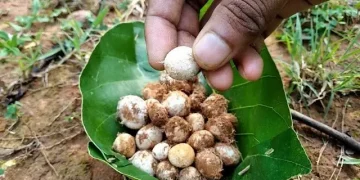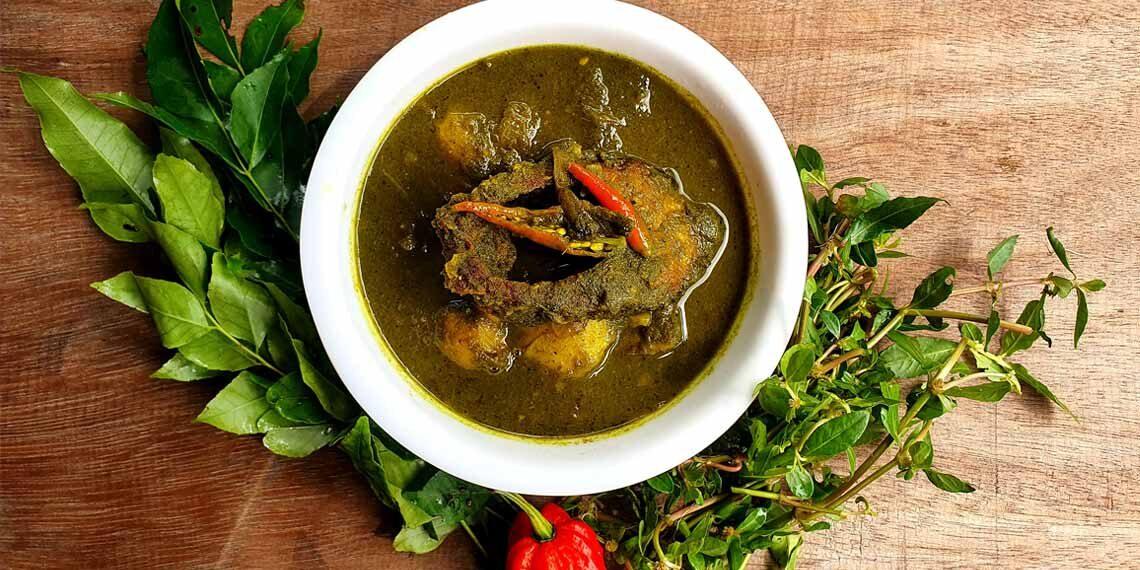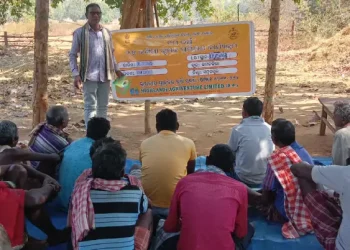The 14 recognised plain tribe communities of Assam that includes Boro, Deori, and Sonowal among others are known for their delectable fish curries.
Among the popular dishes is fish cooked with Matikaduri, which is a famous saag like leafy vegetable grown in Assam. Small fishes such as Puthi are the first choice for this dish but many settle for Rohu. Although common to almost all plain tribes, Matikaduri in fishgravy is actually the specialty of Upper Assam districts. The dish is a favourite for the Sonowal Kacharis, Karbis, Mising, Miri,Khamti and Singpho tribes. Who live in small villages close to the Brahmaputra. Dibrugarh, Tinsukia, Jorhat and Lakhimpur districts areoriginally home to these specific tribes.
Light on the stomach depending on the consistency of the gravy, many count the health benefits of Matikaduri. They believe it helps cure infertility, piles, jaundice and night blindness, prevents cancer, reduces body heat and regulates the nervous system.
Matikaduri incidentally helps in curing infertility, prevents cancer, cures night blindness, regulates the nervous system, and cures piles and jaundice.
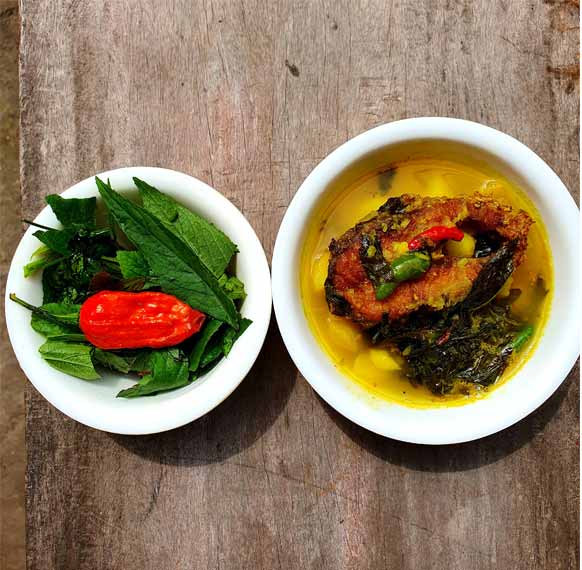
Another nutrition and immunity packed fish recipe is that of fish cooked with red sorrel leaves or mesta tenga leaves (local name) and boiled potatoes. While plain tribes of Upper Assam – it is particularly popular among the Sonowal Kacharis and Khamtis – prefer Rohu and Knifefish, or Chitala, in their dish, tribes of lower Assam such as Rabha, Bodo, Dimasa prefer it with Hilsa. This is largely because the Hilsa-rich Brahmaputra flows through Lower Assam districts such as Barpeta, Goalpara, Nalbari and Dhubri among others.
During monsoons, the waters of the Brahmaputra in the Lower Assam terrain proliferated with Hilsa fish. That actually comes from the Teesta River in Bangladesh (Brahmaputra and Teesta merge at a certain point).
As far as health benefits go, the red sorrel leaves contain moderate levels of potassium, magnesium and calcium. Which help strengthen bones. This dish cooked with local herbs, many believe, helps reduce inflammation, cure jaundice and water-borne ailments as well.
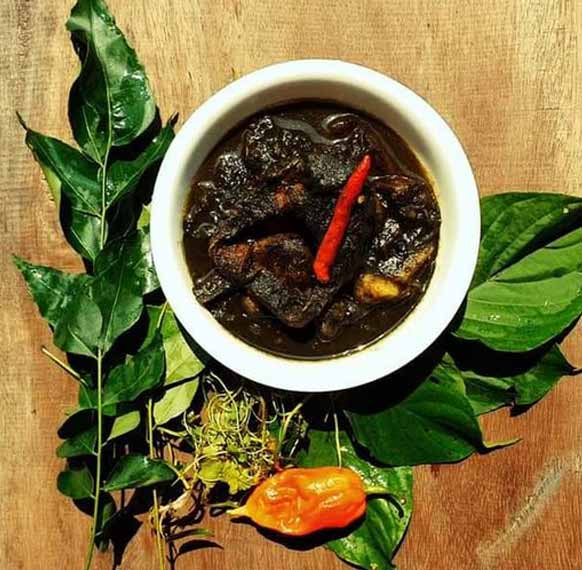
Fish cooked with three locally grown leafy vegetables such as Bhedailota, Manimuni and Norosinxho is another signature dish of the plain tribes. Puthi and catfish – or Magur as they are known locally – is commonly used in this dish. Communities which live far from the Brahmaputra rely on local ponds and marshy lands for small fish for this delicacy. Red chillies, a generous garnishing of black sesame seeds and lemon are used to spice up things. So the indian tribal brings the information of The Indian Tribal Cuisine in Assam.
It is believed for the Indian tribal cuisine in Assam that the leafy ingredients packed with digestive properties. And help enhance memory and heal wounds. The dish has benefits of an anti-depressant and reduces risk of gastric ulcers and skin problems. If you have it frequently, the regulars say. Since Bhedailota, Manimuni and Norosinxho largely grow untended in semi-forested terrain. This is one of the few dishes that is equally popular among all plain tribes, irrespective of where they live in Assam.

